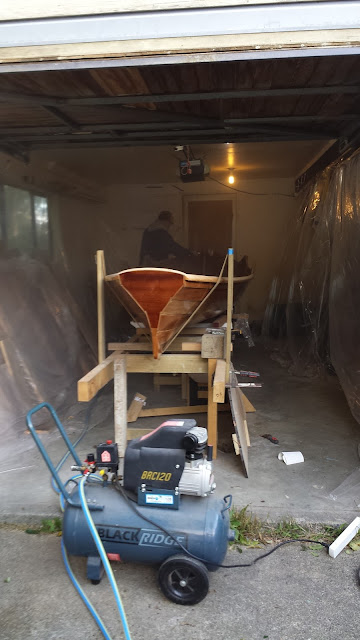So, the result at the weekend, instead of creating a tension in our workshop, has been swiftly set aside as Joe focuses on the next thing...er, whatever that might be.* The rules dictate that a certain amount of gloating is required: it's part of the healing process, so I have tried to help as much as possible, but his sunny disposition makes it an unrewarding game.
We are now hurtling towards completion of this project. Phase One, at least: Phase Two will be the row itself, which started as the big thing, with the building of the boat initially seen as a minor hurdle on the way. As the build progressed, the trip down the Waikato receded in our minds...but was never forgotten.
The exciting step forward last week was the declaration that we were ready to begin the varnishing of the inside of the boat. We need to make the seat back for the cox's seat, but everything else is now done, as far as the boat itself is concerned.
ET's tent has been resurrected, creating a separate spray booth that lets us do other things while each layer of varnish dries. The air is still a bit cold, which means the interval between sprays is more like 2 days (we managed one per day when we did the outer hull), so we have also started on the construction of the oars. With a bit of relearning, Edward the Compressor is functioning and we have completed three layers, spraying with the confidence of a Welshman in a Twickenham front garden.
 |
| It's pretty foggy in there as Joe adds the latest layer, with Edward's noise making post match analysis difficult. Luckily, sign language offers an alternative. |
Look forward to some fascinating insight into oar construction in the next few weeks.
* I expect England to beat Australia. If they do, I hope they'll have the good grace to do it by more than 7 points.











